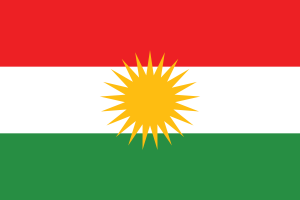Difference between revisions of "Language/Central-kurdish/Grammar/Nouns"
m (Quick edit) |
m (Quick edit) |
||
| Line 77: | Line 77: | ||
<hr>➡ If you have any questions, please ask them in the comments section below.<br>➡ Feel free to edit this wiki page if you think it can be improved. 😎 | <hr>➡ If you have any questions, please ask them in the comments section below.<br>➡ Feel free to edit this wiki page if you think it can be improved. 😎 | ||
==Related Lessons== | |||
* [[Language/Central-kurdish/Grammar/Adjectives|Adjectives]] | |||
* [[Language/Central-kurdish/Grammar/Conditional-Mood|Conditional Mood]] | |||
* [[Language/Central-kurdish/Grammar/Plurals|Plurals]] | |||
* [[Language/Central-kurdish/Grammar/Pronouns|Pronouns]] | |||
* [[Language/Central-kurdish/Grammar/Questions|Questions]] | |||
* [[Language/Central-kurdish/Grammar/Future-Tense|Future Tense]] | |||
* [[Language/Central-kurdish/Grammar/Gender|Gender]] | |||
* [[Language/Central-kurdish/Grammar/Negation|Negation]] | |||
* [[Language/Central-kurdish/Grammar/Give-your-Opinion|Give your Opinion]] | |||
{{Central-kurdish-Page-Bottom}} | {{Central-kurdish-Page-Bottom}} | ||
Revision as of 12:36, 6 March 2023
Hi Central Kurdish learners! 😊
In this lesson, we will learn about Central Kurdish nouns, including their gender, number, and cases. Understanding nouns is essential to building a solid foundation in Central Kurdish grammar. Let's get started!
Gender
Unlike many other languages, Central Kurdish nouns do not have grammatical gender. This means that all nouns are treated the same and are not differentiated based on masculine or feminine gender.
Number
Central Kurdish nouns have two number forms: singular and plural. The plural is formed by adding suffixes to the singular form of the noun. The exact suffixes used depend on the noun and its ending. For example:
| Central Kurdish | Singular | Plural |
|---|---|---|
| خوار | خوار | خواران |
In the example above, the plural suffix -ان is added to the singular form of the noun خوار to form the plural خواران. Another example:
| Central Kurdish | Singular | Plural |
|---|---|---|
| باغ | باغ | باغهکان |
In this example, the plural suffix -هکان is added to the singular form of the noun باغ to form the plural باغهکان. It's important to note that some nouns have irregular plural forms, and you will need to memorize them.
Cases
Central Kurdish nouns have several different cases, which are used to show the function of the noun in a sentence. The following are the most common cases:
Nominative case
The nominative case is used for the subject of the sentence. In Central Kurdish, the subject is typically placed at the beginning of the sentence. For example:
- زۆر خۆش بەدوامیکردووە. (Zor xosh bedewamikirrawa.) - "They were very happy."
In this sentence, the noun زۆر (zor) is in the nominative case and is the subject of the sentence.
Oblique case
The oblique case is used for nouns that are not the subject of the sentence. This can include objects, indirect objects, and possessors. For example:
- هەوڵمان دەکرێت بۆ مەکۆکەکان. (Hewlmana dêkrate bo mekokekan.) - "We are applying to universities."
In this sentence, the noun مەکۆ (meko) is in the oblique case and is the object of the preposition بۆ (bo).
Possessive case
The possessive case is used to show possession or ownership. It is formed by adding the suffix -ی (î) to the end of the noun. For example:
- دەستی کاتێکی لەم خاوەنەیە (Dêsti kateki lêv khawanye.) - "The hand of a clock."
In this example, the noun خاوەنە (khawane) is in the possessive case, and the added suffix is -ی (î).
Vocative case
The vocative case is used when addressing or calling someone by name. In Central Kurdish, the vocative case is not usually marked with any special forms or endings. For example:
- کورد (Kurd) - "Kurd!"
Dialogue
Peshmerge 1: سڵاو ئاجای! چۆنیەتی؟ (Slaw ajay! Chonayti?) - "Hello Uncle! How are you?" Peshmerge 2: بۆسایرە، باشم. تۆ چەوتی؟ (Bosayre, bashe. To chewti?) - "I’m fine, thank you. How about you?"
Tips
- To improve your Central Kurdish Grammar, you can also use the Polyglot Club website. Find native speakers and ask them any questions!
Sources
➡ If you have any questions, please ask them in the comments section below.
➡ Feel free to edit this wiki page if you think it can be improved. 😎
